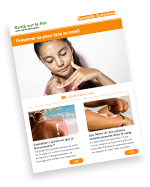The mass vaccination of the European population during the influenza pandemic of the winter of 2009-2010 showed an increased risk of narcolepsya in children and adults. While this risk must be taken into account when evaluating flu vaccines, vaccination remains the best protection against influenza, especially for frail people.

Influenza A vaccine and risk of narcolepsy
In 2009, an influenza pandemic, caused by a new H1N1 type A virus, raised fears among national and international health authorities. The new virus was a combination of different influenza viruses of avian, swine and human origin. Extensive public health campaigns were carried out. vaccination had been conducted at the time. In France, the scale of the epidemic remained close to that of a seasonal flu.
As early as August 2010, cases of narcolepsya were reported in Finland and Sweden in people vaccinated against influenza with the Pandemrix® vaccine. The public health authorities immediately initiated studies to reassess the benefit/risk ratio of this vaccine.
An increased risk of narcolepsy with one type of vaccine
Several epidemiological studies conducted in various European countries, including France, have subsequently highlighted a potential increase in the risk of narcolepsya after influenza A vaccination in children, adolescents and young adults.
Good to know! Pandemrix® vaccine, which was used during the H1N1 pandemic in the winter of 2009-2010, has not been marketed since the end of the pandemic.
In France, 61 cases of narcolepsy, 47 of which were associated with episodes of cataplexy (an abrupt loss of muscle tone), were reported after the vaccination against the influenza A H1N1 responsible for the 2009-2010 pandemic. These cases represented :
- 56 cases per 4,100,000 people vaccinated with the Pandemrix® vaccine;
- 3 cases per 1,600,000 people vaccinated with the Panenza® vaccine;
- 2 other cases for an unidentified vaccine.
A lower risk compared to the benefit of vaccination
Of all the cases detected, 21 were adults. The average time to onset of the first symptoms of narcolepsya after the vaccination were variable according to the age of the subjects:
- 4.7 months for adults;
- 3.9 months for children and adolescents.
Since then, researchers have been trying to understand the mechanisms involved in this association. At the same time, the European authorities are recommending that the risk of narcolepsy be taken into account if this vaccine is used in the event of a new influenza pandemic. This risk remains much lower than the risk of mortality linked to the influenza A virus.
Estelle B., Doctor of Pharmacy


